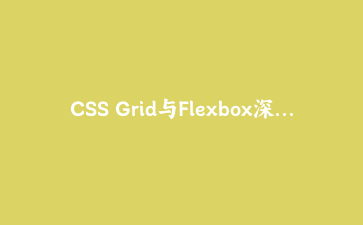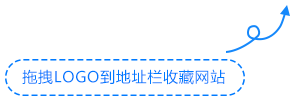作者:前端架构师 | 发布日期:2024年1月 | 阅读时间:18分钟
在现代Web开发中,CSS Grid和Flexbox已经成为构建复杂布局的必备技能。本文将通过一个完整的仪表盘项目,深入探讨如何结合这两种技术创建灵活、响应式的企业级应用界面。
一、布局技术基础与设计理念
1.1 CSS Grid 核心概念解析
CSS Grid是二维布局系统,适合构建整体页面结构:
/* 基础Grid容器定义 */
.dashboard-grid {
display: grid;
grid-template-columns: 250px 1fr 300px;
grid-template-rows: 80px 1fr 100px;
grid-template-areas:
"header header header"
"sidebar main widgets"
"footer footer footer";
gap: 20px;
min-height: 100vh;
}1.2 Flexbox 在组件级布局的应用
Flexbox适合一维布局,用于组件内部元素排列:
/* Flexbox组件布局 */
.card-header {
display: flex;
justify-content: space-between;
align-items: center;
padding: 16px;
border-bottom: 1px solid #e1e5e9;
}
.user-profile {
display: flex;
align-items: center;
gap: 12px;
}二、仪表盘架构设计与实现
2.1 响应式网格系统设计
创建自适应的网格布局,支持多种屏幕尺寸:
/* 响应式Grid系统 */
.dashboard-container {
display: grid;
grid-template-columns: repeat(auto-fit, minmax(300px, 1fr));
gap: 24px;
padding: 24px;
max-width: 1400px;
margin: 0 auto;
}
/* 大屏幕布局 */
@media (min-width: 1200px) {
.dashboard-container {
grid-template-columns: 300px 1fr 350px;
grid-template-areas:
"sidebar main widgets";
}
}
/* 平板布局 */
@media (max-width: 1199px) and (min-width: 768px) {
.dashboard-container {
grid-template-columns: 200px 1fr;
grid-template-areas:
"sidebar main"
"widgets widgets";
}
}
/* 手机布局 */
@media (max-width: 767px) {
.dashboard-container {
grid-template-columns: 1fr;
grid-template-areas:
"sidebar"
"main"
"widgets";
gap: 16px;
padding: 16px;
}
}2.2 组件级Flexbox布局实战
实现复杂的卡片组件布局:
/* 数据卡片组件 */
.metric-card {
display: flex;
flex-direction: column;
background: white;
border-radius: 12px;
box-shadow: 0 2px 12px rgba(0, 0, 0, 0.08);
overflow: hidden;
transition: transform 0.2s ease, box-shadow 0.2s ease;
}
.metric-card:hover {
transform: translateY(-4px);
box-shadow: 0 8px 24px rgba(0, 0, 0, 0.12);
}
.card-content {
display: flex;
flex-direction: column;
flex: 1;
padding: 24px;
}
.metric-header {
display: flex;
justify-content: space-between;
align-items: flex-start;
margin-bottom: 16px;
}
.metric-value {
display: flex;
flex-direction: column;
gap: 4px;
}
.metric-trend {
display: inline-flex;
align-items: center;
gap: 4px;
padding: 4px 8px;
border-radius: 6px;
font-size: 0.875rem;
font-weight: 500;
}三、高级布局技巧与模式
3.1 子网格(Subgrid)实战应用
使用CSS Subgrid实现复杂的嵌套布局对齐:
/* 子网格布局示例 */
.data-grid {
display: grid;
grid-template-columns: subgrid;
grid-template-rows: subgrid;
grid-column: 1 / -1;
grid-row: 2;
gap: 16px;
}
.stats-container {
display: grid;
grid-template-columns: repeat(3, 1fr);
grid-template-rows: auto 1fr;
gap: 20px;
align-items: start;
}
.stat-item {
display: grid;
grid-template-columns: subgrid;
grid-template-rows: subgrid;
grid-column: span 1;
padding: 20px;
background: #f8fafc;
border-radius: 8px;
border: 1px solid #e2e8f0;
}
.stat-content {
grid-column: 1 / -1;
display: flex;
flex-direction: column;
gap: 8px;
}3.2 动态网格轨道与自动布局
实现自适应的网格轨道和智能布局:
/* 动态网格系统 */
.adaptive-grid {
display: grid;
grid-template-columns: repeat(auto-fill, minmax(280px, 1fr));
grid-auto-rows: minmax(200px, auto);
gap: 20px;
align-items: start;
}
/* 卡片在不同网格位置的样式变化 */
.adaptive-grid > *:nth-child(3n+1) {
grid-column: span 2;
}
.adaptive-grid > *:nth-child(5n) {
grid-row: span 2;
}
/* 使用grid-auto-flow控制自动布局 */
.dense-layout {
grid-auto-flow: dense;
grid-template-columns: repeat(auto-fit, minmax(250px, 1fr));
}四、复杂组件布局实现
4.1 数据表格的高级布局
结合Grid和Flexbox创建响应式数据表格:
/* 高级表格布局 */
.data-table {
display: grid;
grid-template-columns: 60px 1fr 120px 100px 80px;
gap: 1px;
background: #f1f5f9;
border-radius: 8px;
overflow: hidden;
}
.table-header {
display: contents;
}
.table-header > div {
background: #475569;
color: white;
padding: 16px;
font-weight: 600;
display: flex;
align-items: center;
gap: 8px;
}
.table-row {
display: contents;
}
.table-row > div {
background: white;
padding: 16px;
display: flex;
align-items: center;
border-bottom: 1px solid #f1f5f9;
}
/* 响应式表格 */
@media (max-width: 768px) {
.data-table {
grid-template-columns: 1fr;
gap: 8px;
}
.table-row {
display: grid;
grid-template-columns: 1fr 1fr;
gap: 8px;
padding: 16px;
background: white;
border-radius: 8px;
box-shadow: 0 1px 3px rgba(0, 0, 0, 0.1);
}
}4.2 图表容器与控件布局
为数据可视化组件创建专业的布局结构:
/* 图表容器布局 */
.chart-container {
display: flex;
flex-direction: column;
height: 400px;
background: white;
border-radius: 12px;
box-shadow: 0 2px 8px rgba(0, 0, 0, 0.06);
overflow: hidden;
}
.chart-header {
display: flex;
justify-content: space-between;
align-items: center;
padding: 20px 24px;
border-bottom: 1px solid #f1f5f9;
}
.chart-controls {
display: flex;
gap: 12px;
align-items: center;
}
.chart-content {
flex: 1;
display: grid;
grid-template-columns: 60px 1fr;
grid-template-rows: 1fr 40px;
gap: 16px;
padding: 24px;
}
.chart-area {
grid-column: 2;
grid-row: 1;
position: relative;
}
.chart-legend {
grid-column: 1 / -1;
grid-row: 2;
display: flex;
justify-content: center;
gap: 24px;
flex-wrap: wrap;
}五、响应式设计进阶技巧
5.1 容器查询(Container Queries)实战
使用最新的容器查询技术实现组件级响应式:
/* 容器查询布局 */
.component-container {
container-type: inline-size;
container-name: main;
}
@container main (min-width: 400px) {
.responsive-card {
display: grid;
grid-template-columns: 120px 1fr;
gap: 20px;
align-items: start;
}
.card-image {
grid-row: span 2;
}
}
@container main (max-width: 399px) {
.responsive-card {
display: flex;
flex-direction: column;
gap: 16px;
}
.card-image {
order: -1;
}
}
/* 侧边栏容器查询 */
.sidebar-container {
container-type: inline-size;
container-name: sidebar;
}
@container sidebar (max-width: 200px) {
.sidebar-nav {
flex-direction: column;
gap: 8px;
}
.nav-text {
display: none;
}
}5.2 自适应间距与尺寸系统
创建基于CSS自定义属性的响应式间距系统:
/* 响应式间距系统 */
:root {
--space-unit: 0.25rem;
--space-xxs: calc(0.5 * var(--space-unit));
--space-xs: calc(1 * var(--space-unit));
--space-sm: calc(2 * var(--space-unit));
--space-md: calc(4 * var(--space-unit));
--space-lg: calc(8 * var(--space-unit));
--space-xl: calc(16 * var(--space-unit));
/* 响应式间距 */
--responsive-padding: clamp(16px, 4vw, 32px);
--responsive-gap: clamp(12px, 3vw, 24px);
}
.responsive-layout {
padding: var(--responsive-padding);
gap: var(--responsive-gap);
}
.adaptive-grid {
gap: var(--responsive-gap);
padding: var(--responsive-padding);
}
/* 流体排版 */
.fluid-typography {
font-size: clamp(1rem, 2.5vw, 1.5rem);
line-height: clamp(1.4, 2vw, 1.6);
}六、性能优化与最佳实践
6.1 布局性能优化
提升CSS布局性能的关键技巧:
/* 高性能布局技巧 */
.optimized-grid {
/* 使用固定尺寸避免重排 */
grid-template-columns: repeat(4, minmax(0, 1fr));
/* 启用GPU加速 */
transform: translateZ(0);
/* 减少布局抖动 */
contain: layout style paint;
}
.optimized-flex {
/* 避免不必要的重新计算 */
flex-shrink: 0;
/* 使用will-change优化动画 */
will-change: transform;
}
/* 减少重绘和重排 */
.stable-layout {
/* 使用transform代替top/left */
transform: translate(var(--x), var(--y));
/* 避免频繁修改布局属性 */
transition: transform 0.2s ease;
}6.2 可维护的CSS架构
构建可维护的布局系统:
/* 布局工具类系统 */
.layout-grid {
display: grid;
}
.layout-flex {
display: flex;
}
.gap-sm { gap: 8px; }
.gap-md { gap: 16px; }
.gap-lg { gap: 24px; }
.justify-start { justify-content: flex-start; }
.justify-center { justify-content: center; }
.justify-between { justify-content: space-between; }
.items-start { align-items: flex-start; }
.items-center { align-items: center; }
.items-stretch { align-items: stretch; }
/* 响应式工具类 */
@media (min-width: 768px) {
.md:layout-grid-2 {
grid-template-columns: repeat(2, 1fr);
}
.md:layout-grid-3 {
grid-template-columns: repeat(3, 1fr);
}
}
@media (min-width: 1024px) {
.lg:layout-grid-4 {
grid-template-columns: repeat(4, 1fr);
}
}七、完整仪表盘布局示例
/* 完整仪表盘CSS实现 */
.dashboard {
display: grid;
grid-template-columns: 280px 1fr;
grid-template-rows: 80px 1fr;
grid-template-areas:
"sidebar header"
"sidebar main";
min-height: 100vh;
background: #f8fafc;
}
.dashboard-header {
grid-area: header;
display: flex;
justify-content: space-between;
align-items: center;
padding: 0 32px;
background: white;
box-shadow: 0 1px 3px rgba(0, 0, 0, 0.1);
z-index: 10;
}
.dashboard-sidebar {
grid-area: sidebar;
display: flex;
flex-direction: column;
background: white;
box-shadow: 2px 0 8px rgba(0, 0, 0, 0.06);
z-index: 20;
}
.dashboard-main {
grid-area: main;
display: grid;
grid-template-rows: auto 1fr;
gap: 24px;
padding: 32px;
overflow-y: auto;
}
.metrics-grid {
display: grid;
grid-template-columns: repeat(auto-fit, minmax(240px, 1fr));
gap: 20px;
}
.content-grid {
display: grid;
grid-template-columns: 2fr 1fr;
grid-template-rows: 400px auto;
gap: 24px;
grid-template-areas:
"charts widgets"
"tables tables";
}
.charts-section {
grid-area: charts;
display: flex;
flex-direction: column;
gap: 24px;
}
.widgets-section {
grid-area: widgets;
display: flex;
flex-direction: column;
gap: 20px;
}
.tables-section {
grid-area: tables;
}
/* 响应式适配 */
@media (max-width: 1024px) {
.dashboard {
grid-template-columns: 80px 1fr;
}
.content-grid {
grid-template-columns: 1fr;
grid-template-areas:
"charts"
"widgets"
"tables";
}
}
@media (max-width: 768px) {
.dashboard {
grid-template-columns: 1fr;
grid-template-rows: 80px 1fr;
grid-template-areas:
"header"
"main";
}
.dashboard-sidebar {
display: none;
}
.metrics-grid {
grid-template-columns: 1fr;
}
}总结
通过本文的深入学习,我们掌握了:
- CSS Grid和Flexbox的核心概念与适用场景
- 复杂仪表盘布局的架构设计与实现
- 响应式设计的高级技巧和最佳实践
- 性能优化和可维护的CSS架构方法
- 现代CSS特性如子网格和容器查询的应用
掌握这些布局技术将使你能够构建出专业级的企业应用界面,提供优秀的用户体验。记住,好的布局不仅是视觉上的美观,更是用户体验和性能的完美平衡。
最佳实践要点
- 使用Grid进行整体页面布局,Flexbox进行组件内部布局
- 优先使用现代CSS特性,但提供适当的回退方案
- 建立统一的间距和尺寸系统,保持设计一致性
- 充分考虑可访问性和用户体验
- 定期进行性能测试和优化





